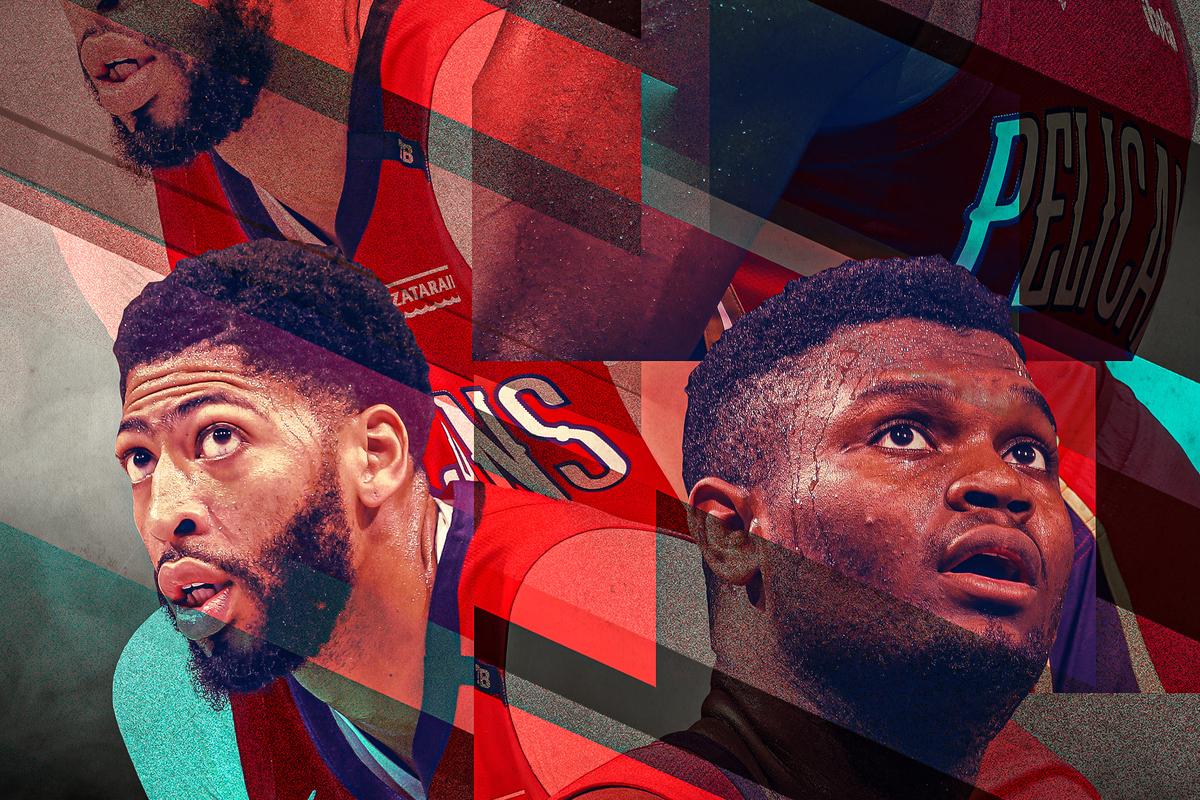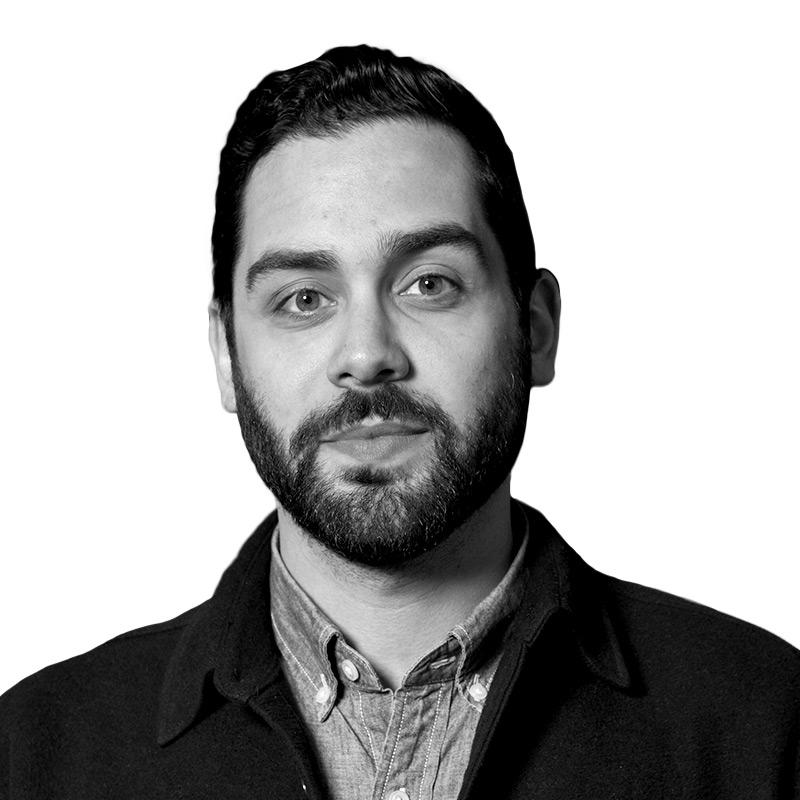
The Anthony Davis trade marked the biggest inflection point in the short history of NBA basketball in New Orleans, not only because it dealt away the face of the franchise for seven years running but because it returned the type of transactional flexibility the team desperately lacked in order to properly support Davis. The AD era began in earnest in the summer of 2013, when then-GM Dell Demps plunked down two lottery picks to land a suitable running mate in Jrue Holiday, a young veteran fresh off an All-Star appearance. From that point on, the Pelicans were roster-building against the clock, often sacrificing the future for the now—a first-round pick for an Omer Asik here, a Buddy for a Boogie there. In trading Davis, new front-office boss David Griffin not only acquired several talented young vets, but also added enough Lakers draft picks to Scrooge McDuck into. In trading Holiday 17 months later, he doubled down, sending the Pelicans’ number of future firsts into the teens. New Orleans no longer had a superstar in his prime, or even the kind of defender who could single-handedly blow up a playoff backcourt, but it finally had options.
The problem is that, no matter the approach, the clock never really stops ticking in New Orleans, whether it’s because of ownership’s unwillingness to take the slow-and-steady route or the gift/curse of replacing one generational player with another. Though the franchise finally turned the page on the improbably long Demps reign, Griffin quickly balanced out his grand plans for building a culture with declarations that “We’re trying to win basketball games!” In Year 1, the Pelicans imported win-now players like Derrick Favors and JJ Redick to fill in around Zion Williamson and their young core, only to fall flat in the NBA bubble. In Year 2, the mission was defense and toughness, and Stan Van Gundy, Eric Bledsoe, and Steven Adams were brought aboard to ensure, as Van Gundy once bellowed, that no one would be “punking” them. But the Van Gundy Pelicans were as imposing as Von Dutch–era Ashton Kutcher, finishing with a worse defense than the season prior and 10 games under .500.
To Griffin’s credit, he didn’t allow his mistakes to fester. He fired Van Gundy after only eight months on the job, convincing ownership to eat millions in the process—something that seemed unfathomable under the previous regime. And on Monday, he took an eraser to his bully-ball blueprint, agreeing to deal both Bledsoe and Adams to Memphis for Jonas Valanciunas. The cost of doing business for the Pelicans is moving back from no. 10 to no. 17, and from no. 40 to no. 51, in Thursday’s draft, and sending the Grizzlies a top-10-protected first from the Lakers in 2022.
An optimist’s view of the Pelicans’ move would be that this is what all of those draft picks are for. Though Griffin’s mountain of assets elicits wild fantasies of a trade package for the next disgruntled superstar, or a blood bank of unearned lottery picks, like the Nets once were for the Celtics, it will more likely be used to grease the means of production—much like the Hawks once did to trade up for the specific player they coveted. Zion’s evolution from low-post Thwomp to jumbo-set point guard requires a minor course-correction in the supporting cast, and the extra draft capital affords the Pelicans more pathways to grow apace. Through that lens, New Orleans upgraded at center and netted $20 million in cap space this summer for nothing more than a late first next year and seven spots in this year’s draft order, and a second-round swap.
But even if Valanciunas’s jumper opens up the floor for Zion in ways Adams never would have, and even if the extra spending power is already earmarked for a backcourt upgrade in the not not collusion sort of way, it’s hard to ignore the bitter aftertaste of what is, in the broad sense, an overpay to clean up a mess made by this same front office. You don’t get credit for opening up less cap space than you would have had if you simply chose not to take back Bledsoe in the Holiday trade or to extend Adams, fresh off an injury-riddled season, for two extra years. And while shorting the Lakers’ post-LeBron future remains a decent bet long term, especially given that the implosion of the franchise’s previous superteam ultimately produced three straight no. 2 picks, using one of their picks as a Scrub Daddy for your misjudgment also starts to scour away the fresh coat of hope.
Much has changed in New Orleans, yet the broad strokes of Zion’s early tenure are eerily reminiscent of Davis’s. Sacrificing future assets for marginal upgrades in the immediate. Restricted free agents not-so-quietly hoping the team doesn’t match. A defense that can’t be fixed. A lingering sense of unease. Long before Williamson’s family members expressed their unhappiness to the media, Davis’s father roamed the bowels of the Smoothie King Center vocalizing his own misgivings about the franchise’s direction.
If there is a difference, it will reveal itself in the coming weeks. Monday’s trade hinges on how the Pelicans spend their fresh cap space, yet New Orleans has never been a draw for marquee free agents. In fact, one of the few bold-faced names the Pelicans have managed to procure all but called the organization liars upon being traded last March. Kyle Lowry’s name has been floated, in a sort of Southeastern sequel to the veteran effect Chris Paul had on a nascent Suns roster. The most prudent path might be to match any offer for Lonzo Ball, if only to retain him for a trade at a later date. Neither seems quite right—any short-term bump from Lowry could be outweighed by the big money he’ll then be owed at age 36 and up, and an unhappy Ball could undo the good you hoped to do for the locker room by excising Van Gundy’s grinding persona—but there are options.
Time is a different story. The Pelicans know how quickly critical decisions arise when building around a transformative player, and given the prevalence of superstar trades, the demands may have even accelerated since their last go-round. No superstar has ever forced his way out before signing a second contract, but Zion, given the major revenue he pulls in from marketing opportunities, would have a good case to become the first. The fear of such a maneuver may be just that: a fear. But the firing of Van Gundy and the expediency the Pelicans are operating with this offseason suggests that they’re also not ignoring it. They can’t. Future flexibility and asset accumulation are important, but it’s all done in the hopes of eventually landing a player like Davis or Zion.

